In this first of a two-part series that examines the AI journey of APAC marketers, we look at the state of AI adoption in the region and how marketers can stay ahead.
The buzz about AI adoption is palpable in APAC. Nearly 7 in 10 employees say they’re excited about AI, and organisations in this region plan to grow their investments in generative AI faster than those in other regions.
But how successfully have marketers channelled their interest in AI into action? What attitudes and approaches have helped them advance, and what challenges might be holding them back?
To understand the state of AI adoption in APAC, and the strategies that marketers like you can use to supercharge your AI marketing journey, Google commissioned Accenture to research and survey over 300 APAC marketers.
Our study uncovered three insights and ways you can tap into each of them to help you get ahead with AI.
1. The fear of missing out and the fear of getting in
There are two major motivations that underpin marketers’ response to this moment of AI transformation. One is the fear of missing out. The other is the fear of getting in.
For many, the promise of achieving a higher ROI with AI is too good to pass up, especially since businesses that are more mature in AI adoption enjoy a 59% boost in revenue.1 In fact, 85% of marketers in APAC say they are in the planning or designing phase for AI implementation.2
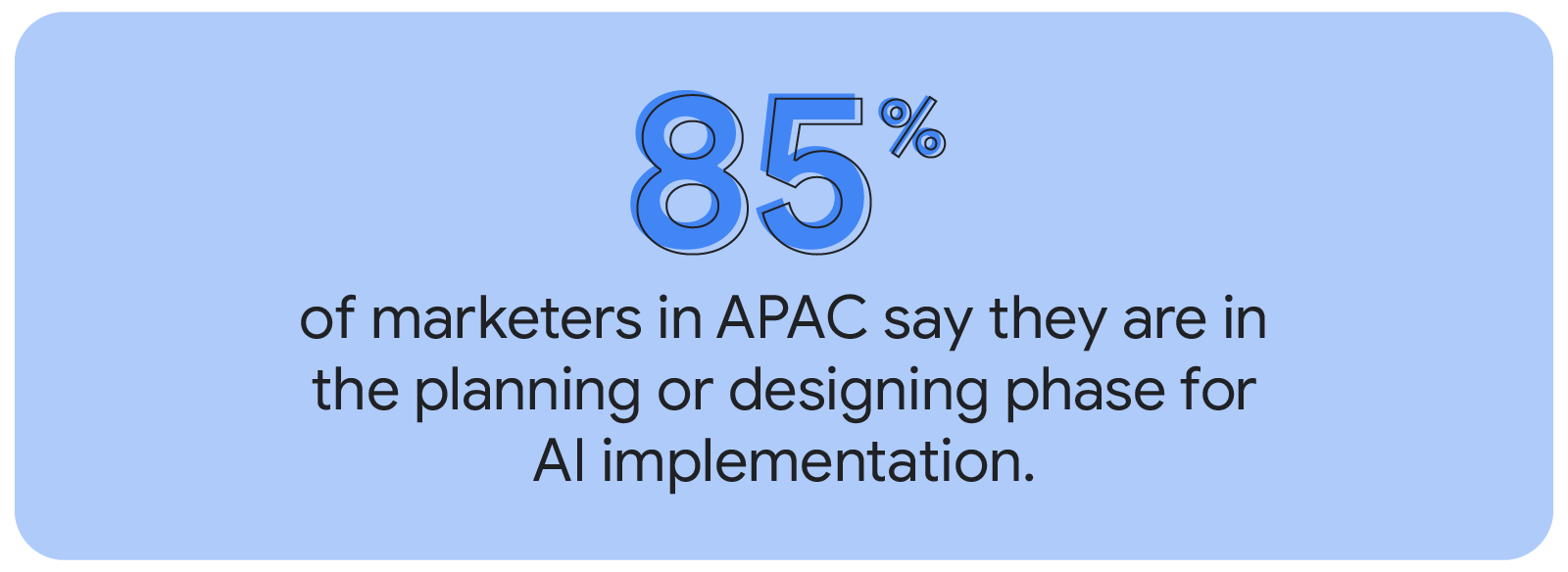
Then, there’s the fear of getting in.
Some of that inertia stems from marketers feeling like their understanding of AI is inadequate for them to act.
Other factors that have slowed adoption include the practical challenges marketers face with putting AI to work. In APAC, the top challenges cited by those surveyed range from a lack of required infrastructure (55%) to securing leadership support (51%) and demonstrating tangible ROI (48%).3
Marketers in APAC on the top challenges they face for AI adoption:
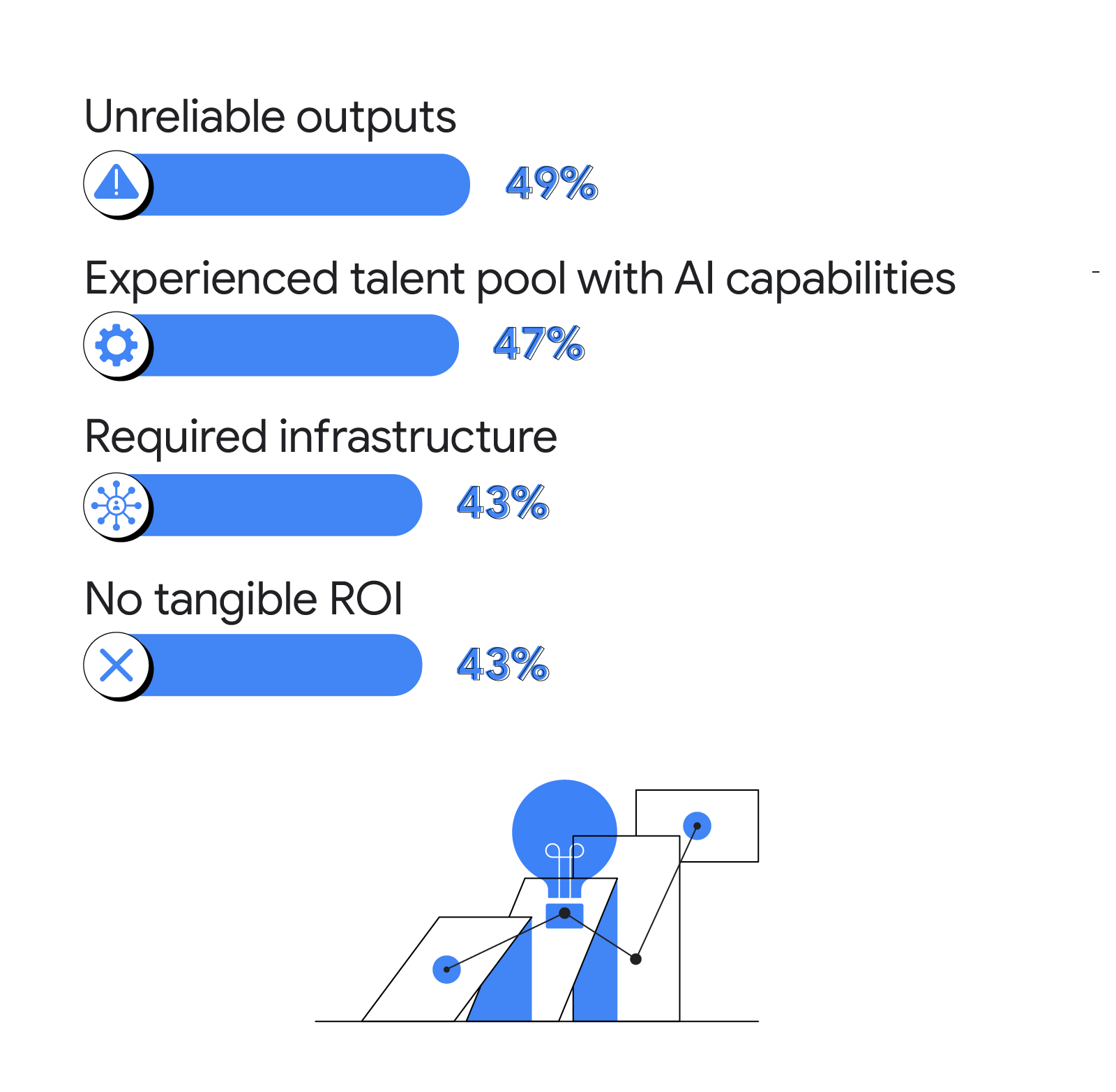
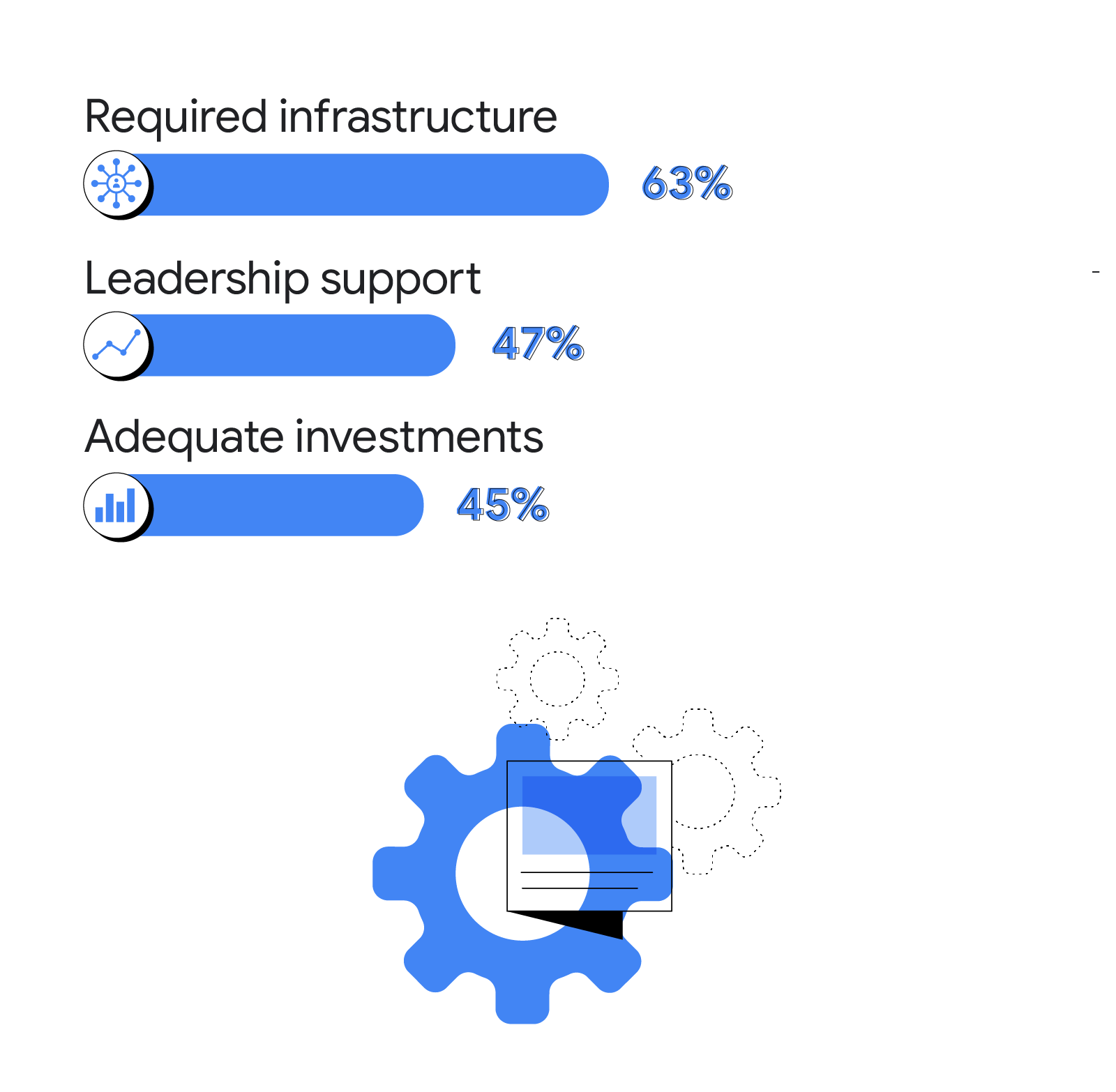
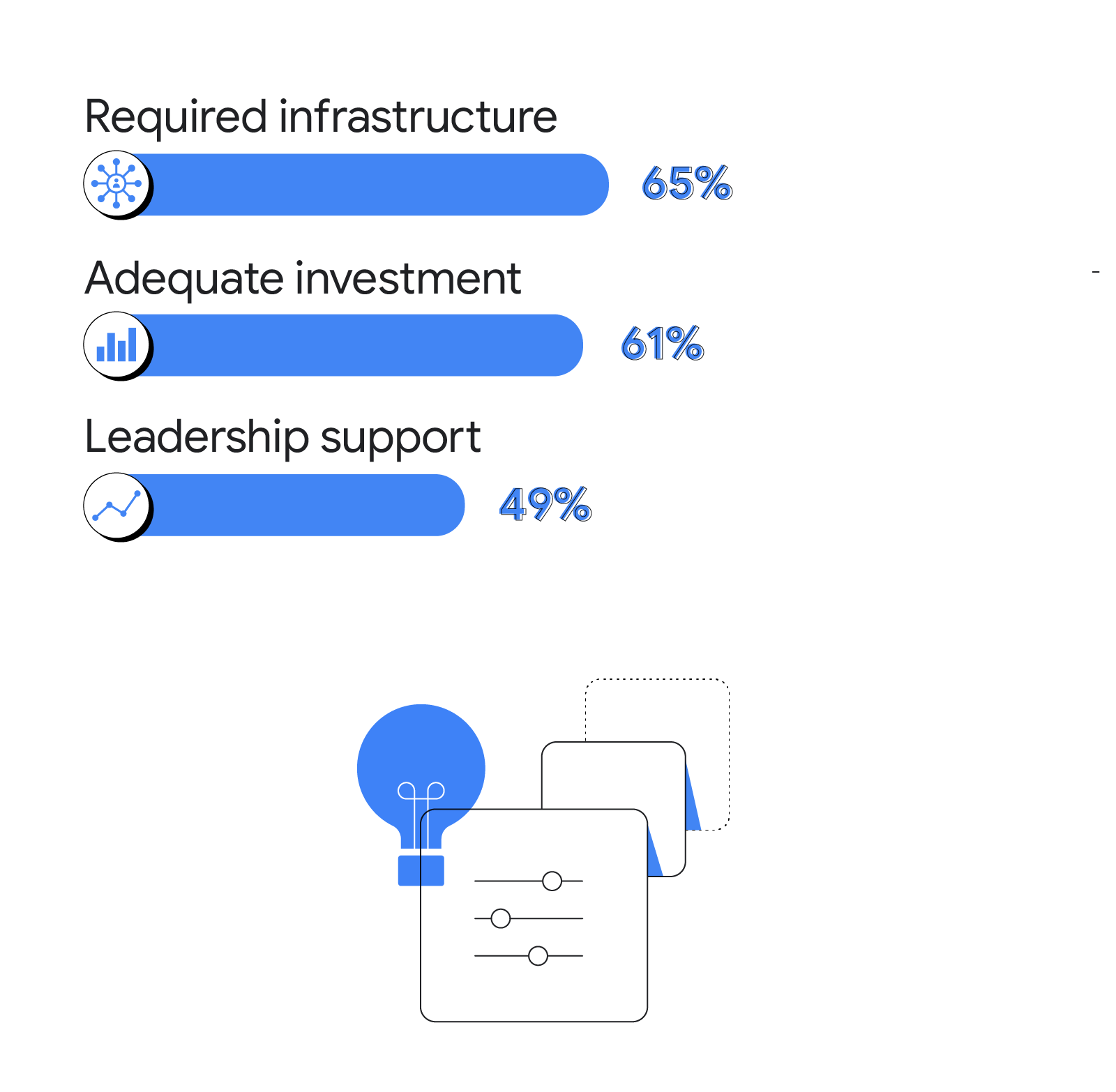
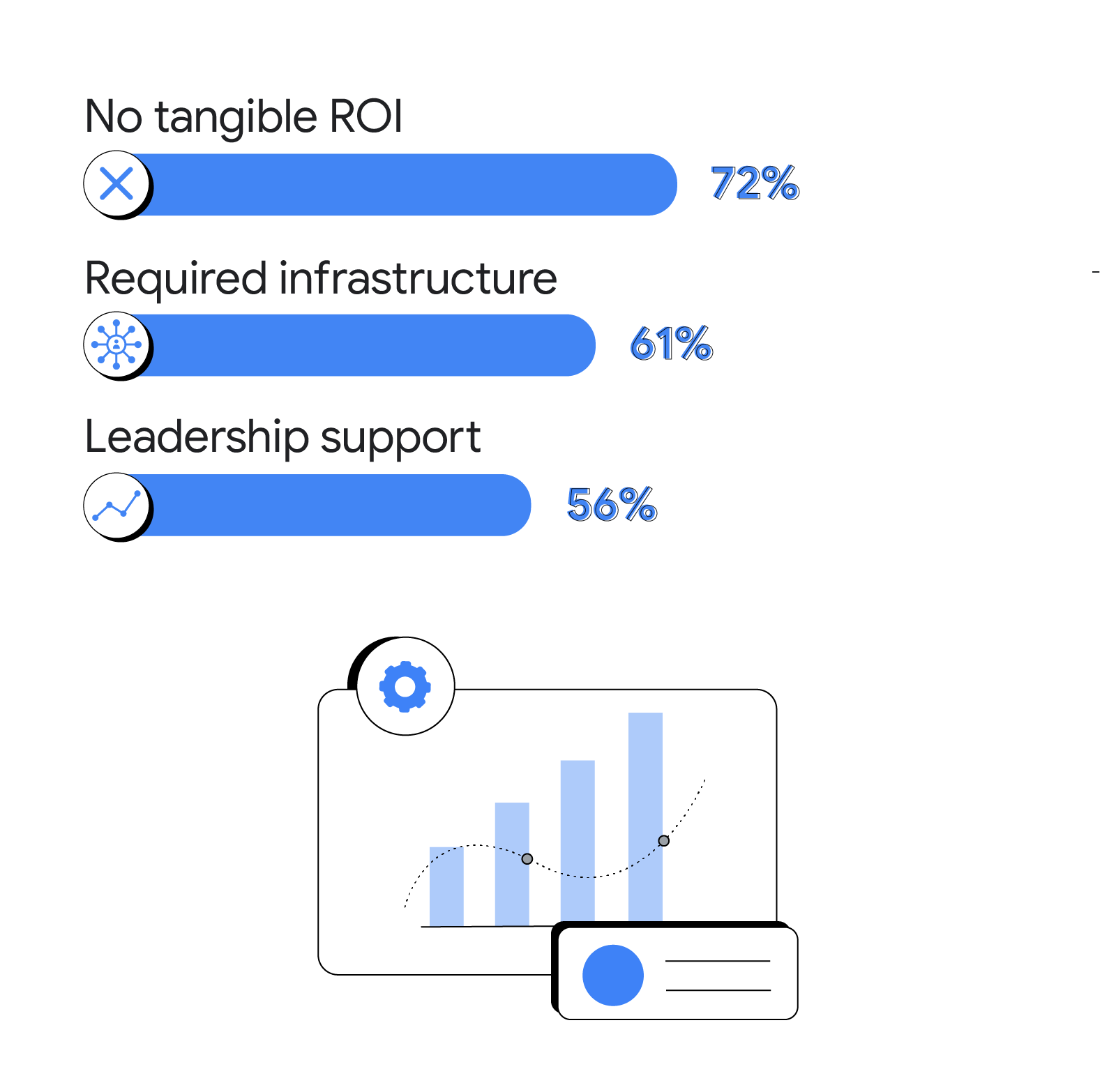
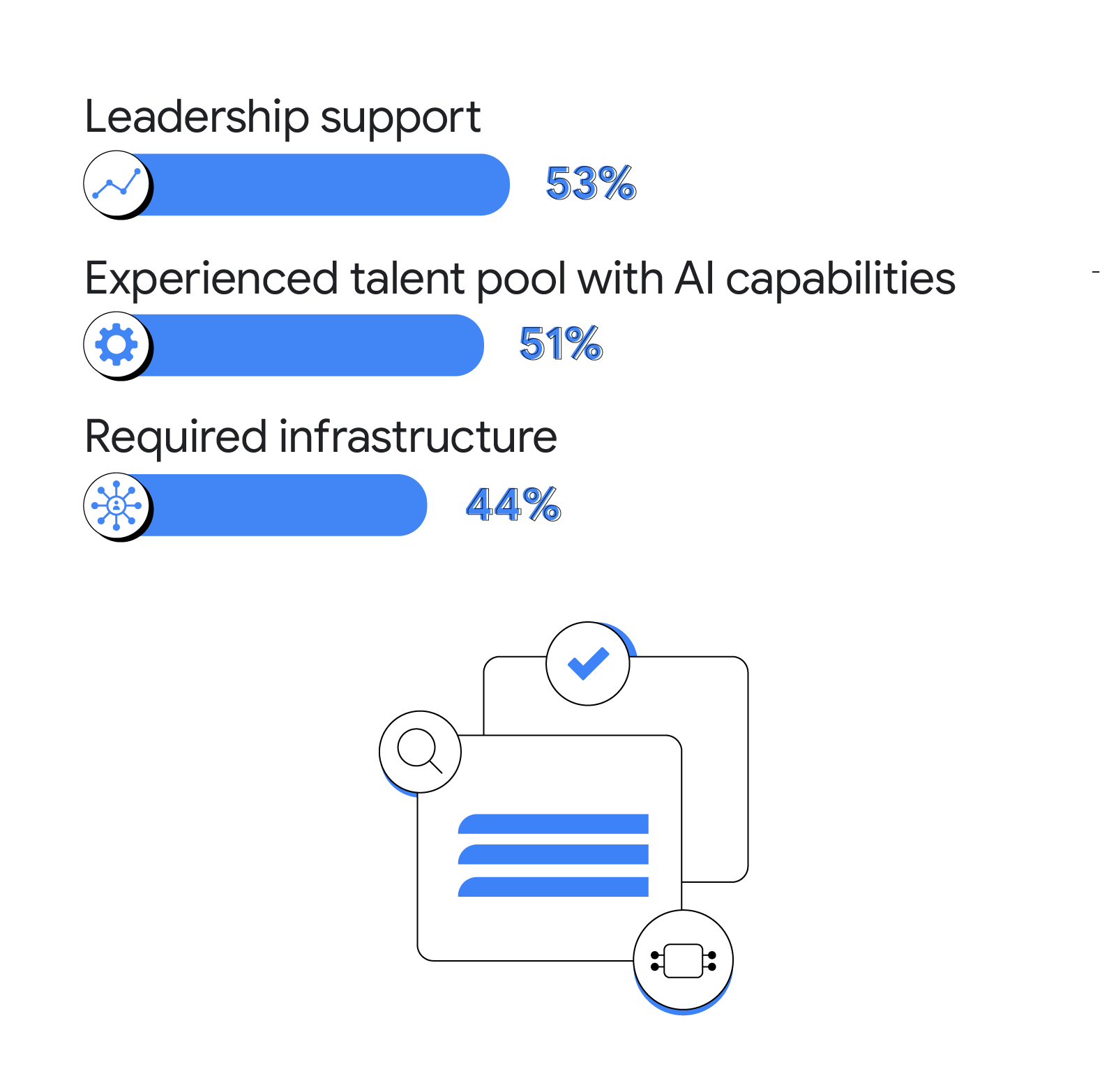
Your next step: Get in where others fear.
Start by taking foundational steps in adopting AI in marketing. This includes being clear about the goals you want to achieve with AI because it will help you identify the right areas to prioritise your AI adoption efforts.
And when it comes to advertising specifically, put the AI essentials in place and use them to supercharge your ad campaigns and maximise results.
Once you’ve established the basics, embrace a mindset of experimentation. By testing, learning, scaling, and sharing about your AI adoption efforts, you can seed a culture of curiosity and openness toward AI in your organisation.
2. How AI is used: Efficiency now, creativity next
Our survey found that marketers who’ve adopted AI have commonly used it to drive efficiencies. But that’s starting to change as they recognise the power of generative AI in marketing.
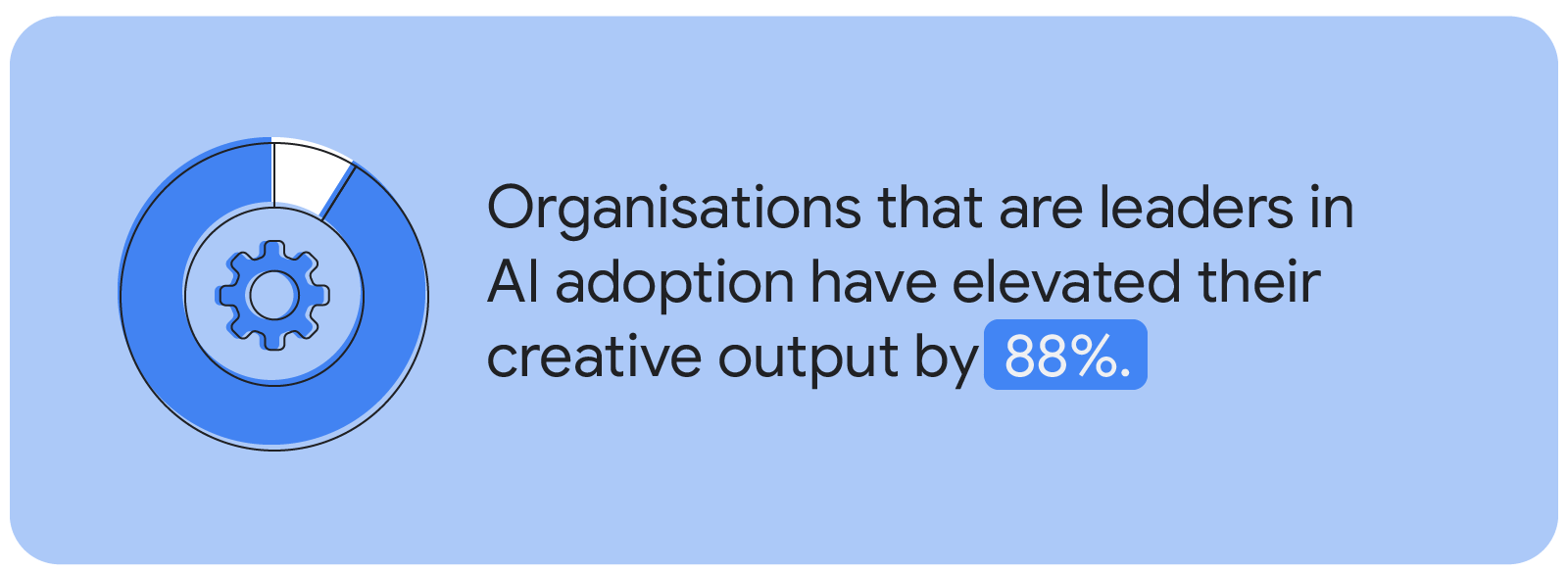
Currently, 8 of the top 10 use cases for AI in marketing focus on driving productivity,4 including trends analysis and forecasting, and keyword research. Those top use cases require analytical and predictive capabilities, which AI provides. So marketers have easily taken to using AI in those instances to get a better ROI.
But they’re increasingly aware of the potential of generative AI too. It can raise the bar on creativity and deliver highly relevant experiences, including through visual storytelling and creative versioning, to suit customers’ myriad preferences. Already, 6 out of the top 10 use cases for AI in marketing that are being planned by APAC marketers centre around image or content creativity.5 And organisations that are leaders in AI adoption have elevated their creative output by 88%.6
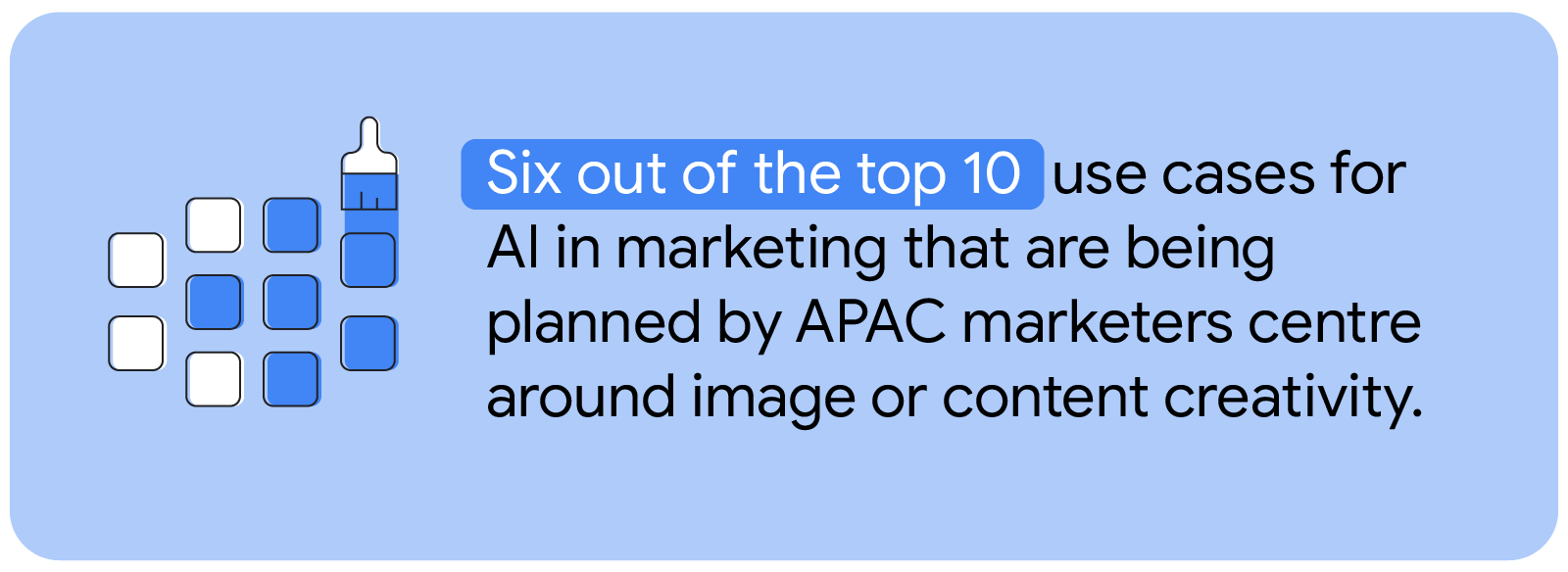
Your next step: Go from pursuing efficiency to creativity.
Build on the confidence you have in using AI to drive marketing efficiency and explore uses of AI that empower you to be more creative. For a start, try using AI to generate variations of creative assets at speed and scale, or develop highly relevant creatives for every customer segment and touchpoint.
If you want to take it a step further, use AI to analyse your creatives and performance. It can help you find what works best for different audience segments in real time and further optimise your campaign creatives and marketing strategy.
3. Partnerships help marketers gain confidence
There’s power in partnerships. When you collaborate with experts in AI in marketing, you can move fast on AI adoption, especially if you don’t have a ready AI infrastructure and talent pool.
Already, 85% of businesses in APAC fully or partially outsource AI talent,7 and they enjoy a wide range of benefits, including greater efficiency and agility.
Top reasons in APAC for working with partners on AI in marketing:
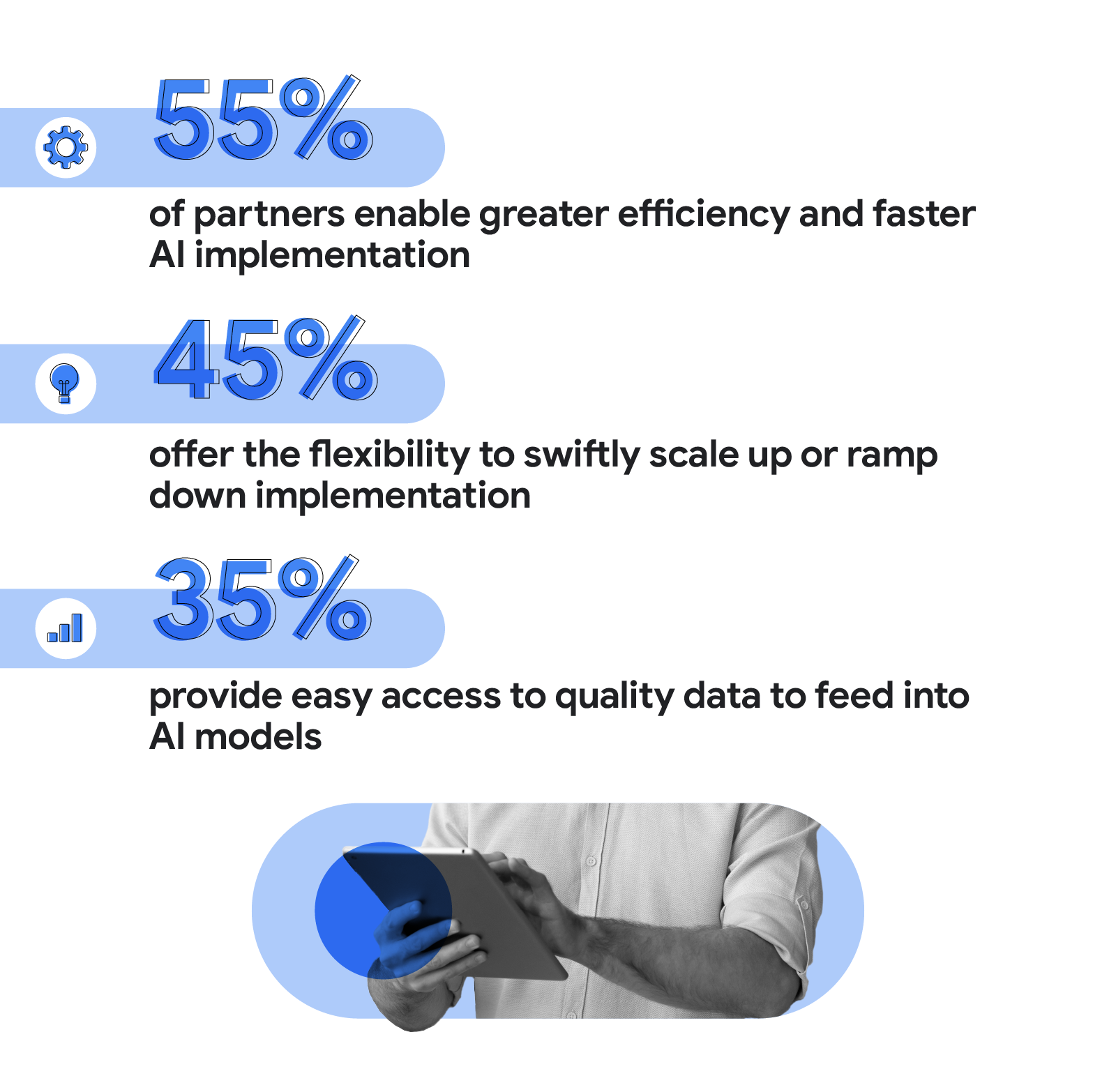

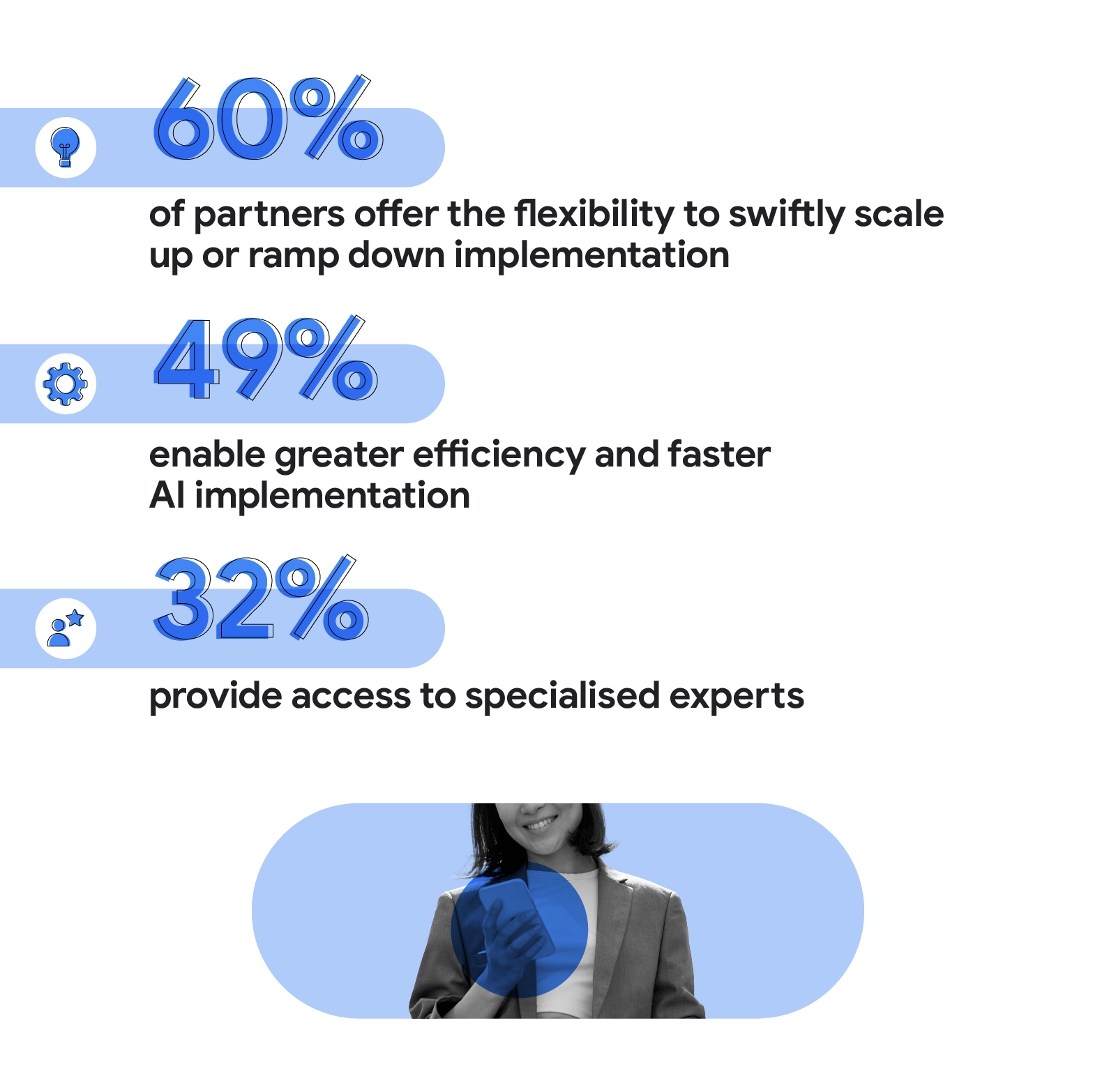
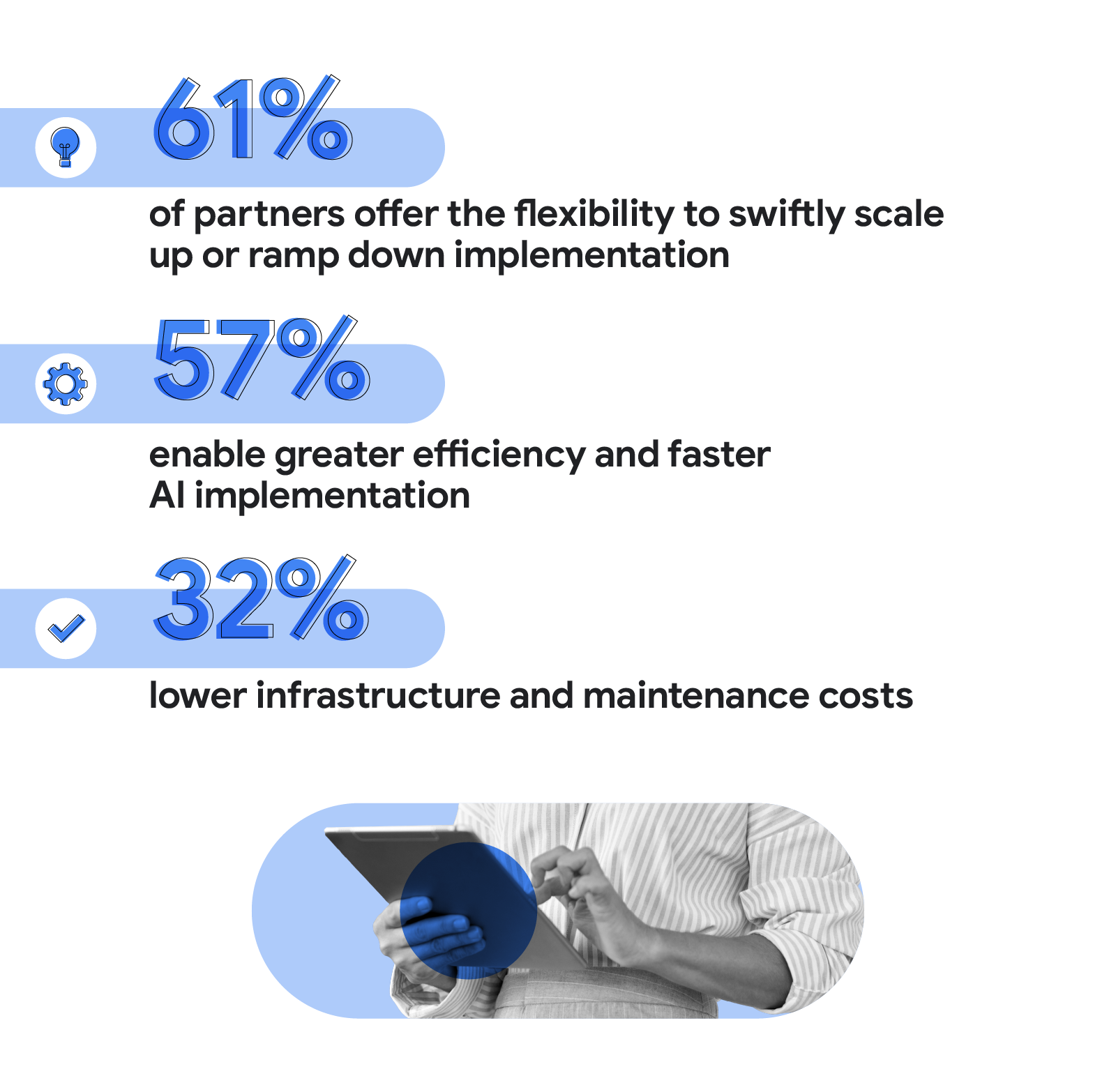
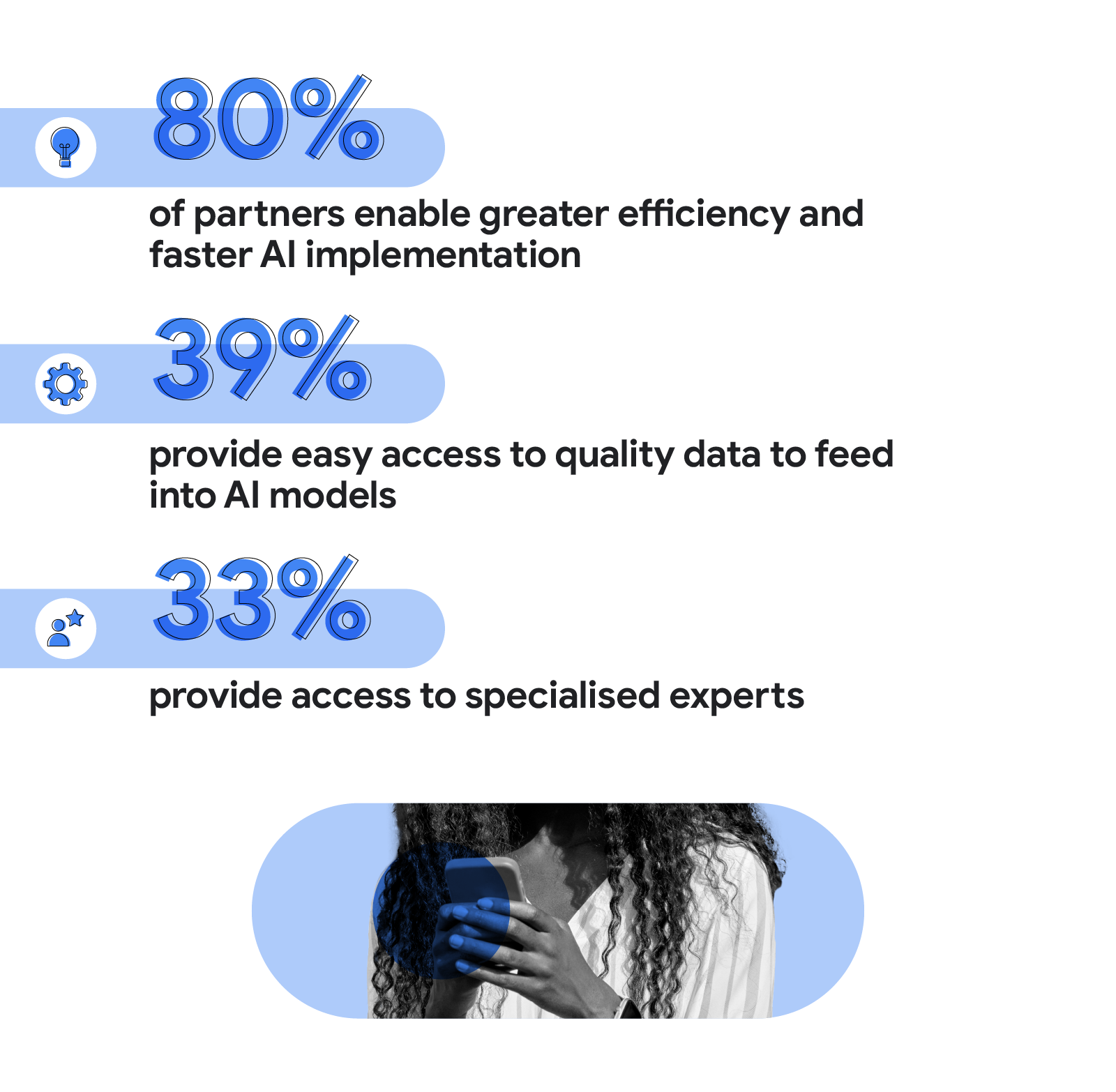
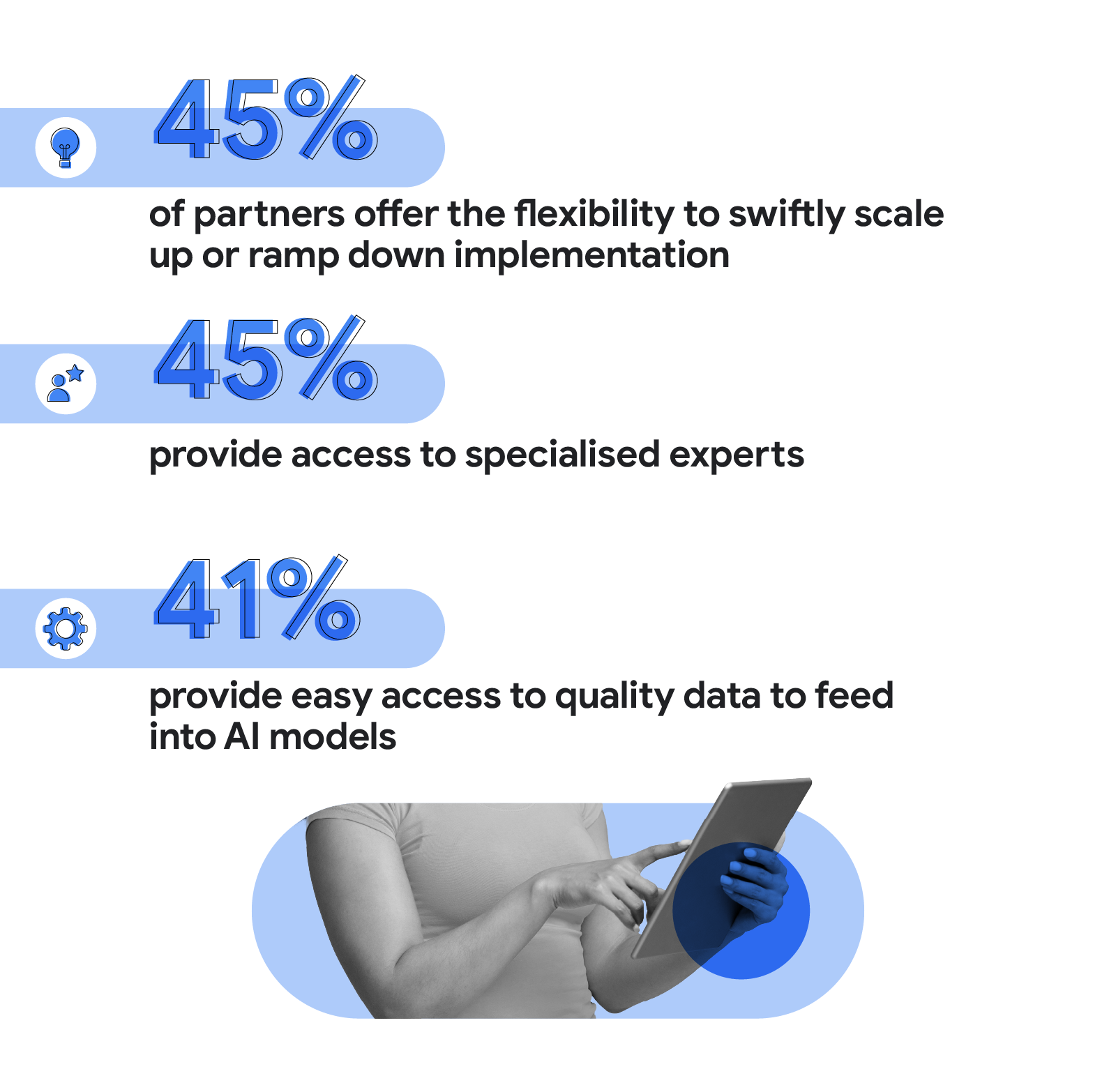
Your next step: Pick the right partner to help you get ahead in your AI marketing journey.
Start by assessing your needs. Do you need a partner who is able to provide software as a service to manage your digital assets and generate creatives? For instance, if you want to create better assets for your Search campaigns, you could use a chat-based feature like conversational experience in Google Ads to quickly identify effective keywords, descriptions, and images.
Or do you need an expert who is able to create custom AI-powered solutions for your organisation? If you’re looking for a collaborator to build your AI infrastructure and projects to be in line with your vision and goals, consider working with partners who are skilled at integrating systems.
The adoption of AI in marketing will grow in APAC as marketers embrace its many benefits, from greater efficiency and creativity to business agility and improved revenue. You, too, can seize the immense potential of AI in marketing by getting in where others fear, pursuing creativity with AI, and leaning into strong partnerships.
In the next part of this series, learn about the different AI marketing maturity levels, and how you can level up to drive business growth with AI.







